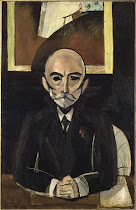I finished reading Hunger Games a while ago and I wanted to reflect on the author's (Suzanne Collins) use of violence. As I was reading the book I remember thinking that Collins' fight scenes seemed amateur. There was something about them that wasn't quite right. Later, I reflected on why her style seemed so unfamiliar to me.
In books like The Lord of the Flies, violence is portrayed as a force that is barely under the surface of civilization, waiting for its chance to boil up and over. The boys are sadistic and wild when left to their own devices. Similarly, the television series Spartacus depicts slaves forced to take part in the gladiatorial games. The characters show no reluctance once on the sand, easily tapping into their "inner monster" for scene after scene of computer animated throat slashing and decapitation.
What I came to realize about Hunger Games was that the author did not present violence as the beast that sleeps within us all. In Collins' story characters fight because of their relationships. All of these stories share the similarity of forcing their characters into a situation where there will be violent conflict. Collins' story proposes that people are most likely to be violent to protect the ones that they love. In contrast, the fiction written by male authors emphasizes the inevitability of the violent beast within us all. Is gender a useful category for analysis here? Are males trained to see violence as inevitable and females trained to see it as a last resort to protect our loved ones?
Sunday, February 20, 2011
Subscribe to:
Post Comments (Atom)



1 comment:
Thought provoking reflection. Specific to a gender or individual? Seems worthy of study & discussion. Thanks for the post!
Post a Comment